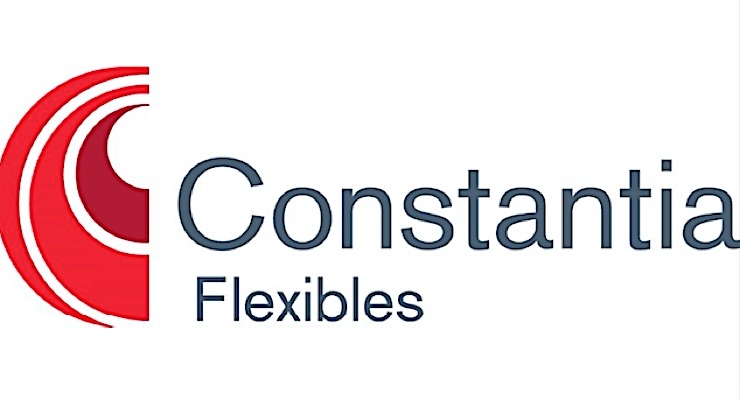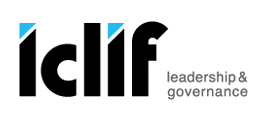Soft is the New Hard
What is it that makes all heads turn when she walks into the room? Why is it that everyone becomes silent the moment he opens his mouth? Colleagues listen so intently as soon as he speaks – they seem to hang on his every word.
Given equal status, ever wonder why some people are held in higher esteem? What is it they do which ensures immediate respect and attention from their counterparts?
Standing out from the crowd and commanding attention is not innate to everyone, but it is a skill that can be learned.
Executive Image
Some call it Executive Presence, others Executive Image, Leadership Presence or another variation of the term. Whichever your preferred description, more often than not, it refers to the powerful, polished, precise radiance of Commitment’ which successful leaders exude as they go about their daily activities.
The Harvard Business Review defines Executive presence as ‘the ability to project a mature self-confidence, a sense that you can take control of difficult, unpredictable situations; make tough decisions in a timely way and hold your own with other talented and strong-willed members of the executive team.’
While public speaking plays a role in how we come off, it is only a small piece of the pie when it comes to Executive Presence.
Cultivating Confidence
How is it that some leaders remain calm and confident when something doesn’t go according to plan? The posture associated with confidence comes from preparation. Nothing can replace taking the time beforehand to prepare yourself for that meeting or presentation. Even an impromptu meeting with your boss can be deserving of 5 minutes of quiet reflection to gather your thoughts and prioritize issues.
Preparation not only means ensuring that you have enhanced knowledge about a topic, synthesized and prioritized ideas; but also that you will naturally be (and appear) more organized and confident in your posture and presentation of relevant key ideas. It enables you to take decisions with conviction.
People with executive presence are excited, energized and determined in everything they do. They project a passion for their work and are prepared and ready for action at all times. Confidence allows you the space to make and own poised decisions. Confidence also gives you the courage to say “no” to negative pressure from both within and outside the workplace. It allows you to remain steady during difficult times, accept setbacks with grace, and adapt readily to new situations.
Practically speaking, it can be affected by a number of behavioral and perceptive elements.
Commanding attention and respect
If you hold a position of authority, chances are you have already proven yourself. What did you do to convince others that you were worthy of their respect and admiration? Take inventory of what you have done right and don’t forget to KEEP DOING IT! People who deserve their seat at the table don’t have to buy it at every meeting, but they often have to work to keep it.
Conveying Expertise
Are you or are you not an expert on the topic? If closer to the novice end of the spectrum, how can you convey a minimal amount of knowledge so people will respect your opinions and decisions? What additional information needs to be obtained before attending the upcoming meeting? Do your homework on the subject (as well as the people!) before stepping into that meeting, conversation or general assembly. Belief in what you are saying helps convey expertise on the topic. Sometimes asking a good, informed question can serve to augment your expertise and improve your image more than a long discourse on the topic.
Obtaining Commitment & Alignment
Good leaders have a sense of mission in every task undertaken. They radiate with enthusiasm for what they do and know how their actions will influence strategic objectives of the organization. Are your personal development goals aligned with business objectives? If you are not so sure, confirm your boss’ or other relevant colleagues’ perspectives in terms of organizational priorities. Then make sure your department’s goals are aligned with these. Assuring clarity of business as well as personal development goals are essential first steps to the alignment process.
Portraying Passion for the People
Successful leaders not only communicate a passion for the work, but also a passion for the people. Does your team respect you for the interest you show in their development and contributions? Recognizing and encouraging team members through positive reinforcement for jobs well done can make a difference in obtaining buy-in, respect and deference along the journey.
Communicating Excitement to Inspire
Talking up the work and how it benefits stakeholders can inspire others to join the bandwagon. When passion for the work is communicated, it inspires people to put their best foot forward. Moving with purpose and determination can also generate respect. Hold your head high as you walk through the door and proceed with conviction through the room. Be sure of what you are saying and state it high and loud. Remaining calm in the face of adversity sparks admiration.
Rewarding others for their work
Make a daily checklist of your own well done’s as well as those of the members of your team. If you can’t find anything more than a mere smile or taking the initiative for some small task, take note! If neither one of these is apparent, list something for which you are grateful (it could be something as simple as a sunrise). Positive reinforcement is contagious and makes people feel good. Don’t forget to begin with yourself to set the example!
Communicating Empathy
Exhibiting a genuine concern for and desire to understand direct reports, team members and other individuals in the organization can be felt in every exchange and strategic initiative. As a result, you become a magnet with whom people want to work.
Understand both the power of silence and knowing WHEN, WHAT and HOW to communicate
Engaging Others with Good Questions
Demonstrating curiosity about colleagues’ points of views is the best way to engage and hold their attention. People love to speak about themselves and be consulted on their opinions. Asking non-judgmental, open-ended questions about relevant issues can make all the difference. When asking questions, keep them on topic, short, and present or future-focused. Beginning with “what” and “how” opens the floor for cerebral stimulation and development. A word of caution: Questions beginning with “why” can sometimes put people on the defensive and questions that are too focused on the past could unnecessarily keep people stuck.
Being a good Follower
Leaders set a good example by being loyal and respecting their mentors, superiors and instructors; which is one of the ways they were able to succeed in the first place. You learn as a follower and that allows you to better emulate well-respected leaders, relate to your audience, build your credibility and earn their trust when you become a leader.
Dressing for Success
Only have 5 great outfits and saving them for those special gigs? There is something to be said for first impressions. Always dress as if the people you are meeting are new clients – or the Queen of England. At the very least, make sure you are clean, presentable and put your best face forward. You are setting an example for the team and dressing your best is a way of demonstrating respect. How we dress communicates not only the respect we have for others, but also the respect we have for ourselves. Dressing for success helps create that reality. Wear those top-grade ensembles more often!
Quality of Voice
Monotone Voice? Do some people talk over you or seem to enter the conversation just as you were going to speak? Grabbing the attention of the boardroom may require some practice in terms of volume and inflection. Speaking in measured phrases with emphasis but not too much excitement can help to get your point across clearly. Take voice lessons or implement a regular exercise to develop a commanding quality. You can do this on your own by standing in one corning of the room and rehearsing your speech by throwing your voice diagonally to the furthest corner of the room. Rehearsing your speech in the shower or other humid quarters is another useful practice.
Positioning
Power is contagious. Don’t be afraid to arrive early and grab that seat closest to the most powerful person in the room. Getting to the venue ahead of time allows for small talk that can also help put you at ease and increase confidence that will further serve to enhance your image.
Visibility
Getting noticed by decision makers is not always easy and some actions may be very specific to your professional situation. In spite of this, there are proven tactics that have worked for many an executive.
Visibility consists of making oneself and accomplished feats known to key stakeholders. It also involves pointing out how these accomplishments have helped to augment the reputation, efficiency and / or profitability of the organization.
Communicate your Wins
Accomplishing much for the company but no one seems to know? In all humility, make your accomplishments known to relevant people in the hierarchy. In some cases this can be done verbally, in others in an e-mail or newsletter, sometimes a combination of both is necessary. Find the best means suited to disseminate the information you need to put out there and don’t be afraid to let people know. If you don’t, who will?
Networking
One common technique for leaders to make those necessary connections involves getting involved in transverse work groups or committees. Joining such initiatives helps meet those relevant stakeholders in a more relaxed environment where you can be yourself. Undertake a stakeholder analysis and connect with 2 or 3 people who could be the most relevant to your career at this time.
Stakeholder mapping
Not sure who you need to influence? Conduct a stakeholder mapping including relevant colleagues both inside and outside your department or immediate realm of influence. Who do you feel closer to? Who seems more distant? Who could help to grow your career? Analyze the existing relationships with each of them, then select 2-3 which could be worthwhile to further develop in order to help advance your career.
Making the Time
Too busy and can’t find the time to network, or further develop relationships with key stakeholders? Create a structure stating the new action you’d like to pursue and the regularity with which you could reasonably undertake it. Like to make more rounds to see colleagues? Need to prepare more before meetings? A structure such as writing it down in your calendar or noting it on your wall or computer screen can help. A visual reminder reinforces the importance and heightens the probability of carrying out the task, thus ensuring that you won’t defer these essential actions any longer.
Playing Politics
Prefer working alone? Don’t like to ‘play politics’? You may have to decide to what extent and at what cost you wish to protect your privacy. While it might not be in your nature to attend every single town hall meeting or raise your hand to head up all initiatives, making an effort to get involved at some level will make you more visible. Decide which task force or think tank most closely resonates with your authentic style and attempt a leadership role in within.
Making yourself known and available to others in ways that are perceived to be helpful can also shift opinions. Not a group joiner? If you consider ‘playing the political scene’ as fake or phony, you may need to adjust your perspective and behavior to fit in that important town hall meeting or kind word which can make a difference to the right people.
Managing Up
In some cases, standing out from the crowd may involve convincing the boss that you are capable of filling in in his absence. What are your boss’ needs? If you can’t answer this question, you may need to dig a bit deeper into her motivations. A casual lunch or coffee can provide the space for her to let her hair down and for you to ask those open questions that lead to her confiding more private thoughts and aspirations to you. Armed with additional knowledge, you will be better able to define relevant ways to help out, tailor your communications and tasks moving forward. Another way to gain the recognition of the hierarchy is to prepare and present a proposal of consequence to top management.
Impeccable Character
Being successful also involves strength of character and being liked. Are you the type of person who people love to work with due to your good nature and efficiency or does your personality have a tendency to get in the way of establishing good relationships with (or even repel) coworkers? If you show impatience by raising your voice or drumming your fingers, you may need to consider ways to better manage your emotions.
Questioning and Listening …
If you have a tendency to blurt out disagreement when you are uncomfortable or are surprised by a point of view, ask an objective open-ended question instead, and then listen intently to the answer.
A good question coming from a place of genuine curiosity can do much to gain allies and help to enhance your image.
Job Title
Whether you are seeking to promote yourself inside our outside the organization, your job title should be specific enough to convey how you can help both internal and external stakeholders. Listing the languages you speak can also be a plus.
The possibilities to improve your image are numerous. Focus on the ones which will make the biggest difference for you and let us know which tactics work best!
© Dana Lefeuvre, 2017.
Related Readings
Baldoni, John. Lead Your Boss. 2010.
Frankel, Lois. Nice girls don’t get the corner office. 2004.
FYI, Korn Ferry. For Your Improvement. 2009.
https://hbr.org/2012/08/de-constructing-executive-pres
























































